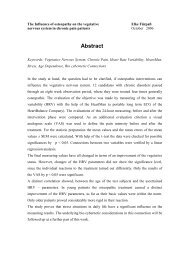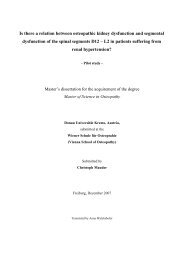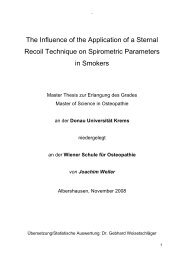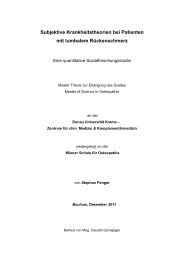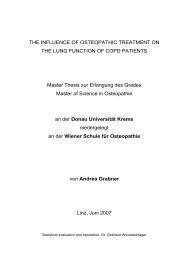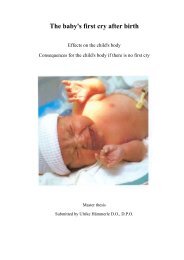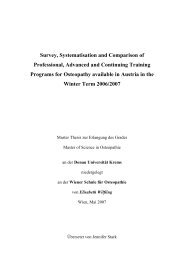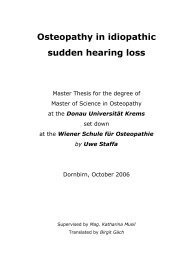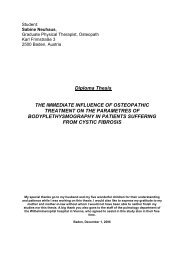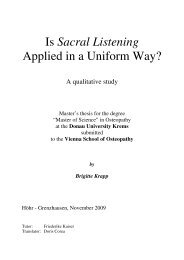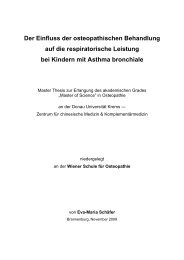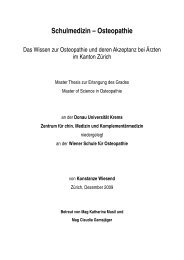Can back pain caused by symptom-giving sacroiliac joint relaxation ...
Can back pain caused by symptom-giving sacroiliac joint relaxation ...
Can back pain caused by symptom-giving sacroiliac joint relaxation ...
You also want an ePaper? Increase the reach of your titles
YUMPU automatically turns print PDFs into web optimized ePapers that Google loves.
1.4.4. Posture and postural changes<br />
During pregnancy the organs in the upper abdomen such as liver, stomach and<br />
spleen have to make way for the enlarging uterus with its growing placenta and fetus<br />
and are therefore moved cranially and slightly laterally. Likewise, the third lumbar<br />
vertebra, representing the apex of lordosis, offers more space to the uterus when<br />
shifted posteriorly. This shift occurs <strong>by</strong> a lowering of the lordosis in the lumbar spine,<br />
and this lowering can only take place if the pelvis straightens up. This straightening<br />
up advantageously enables the SIJ to withstand the considerably greater pressure on<br />
this <strong>joint</strong> due to weight gain in pregnancy (see chapter 1.2.). If such a flattening of the<br />
lumbar lordosis is not possible, the forces within the pelvic ring increase according to<br />
the model of the pelvic shear (see chapter 1.2.3.), and that alone can lead to<br />
increased strain in the SIJ. [34]<br />
In the course of the ninth month of pregnancy the anterior weight increases in<br />
relation to the posterior weight due to the size of the uterus, so that the muscular<br />
structures are not able any more to keep the pelvis in an upright position. In most<br />
cases this leads to an increased lordosis in the last stages of pregnancy. As a<br />
compensatory mechanism, the thoracic spine and the nape are stretched; in other<br />
words, these two curves of the spine are flattened and the shoulders are pulled<br />
<strong>back</strong>wards. [25]<br />
1.4.5. Uterus<br />
During pregnancy the uterus undergoes a twenty-fold increase in weight from 50 g to<br />
1,100 g at term. It grows from 7 cm to a length of 30 cm and the cavity expands from<br />
some 40 ml to 4,000 ml. [68]<br />
The uterus consists of bundles of smooth muscle cells separated <strong>by</strong> thin sheets of<br />
connective tissue. Myometrial growth is almost entirely due to muscle hypertrophy,<br />
although some hyperplasia may also occur. The stimulus for myometrial growth and<br />
development is derived from the direct effects of the growth processes in the uterus<br />
and from the effects of oestrogen and progesterone produced <strong>by</strong> the ovaries and the<br />
placenta. The muscle cells are arranged in three layers with muscle bundles running<br />
Master’s Thesis Wolfgang Aspalter 27



